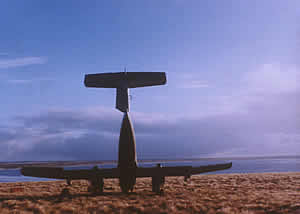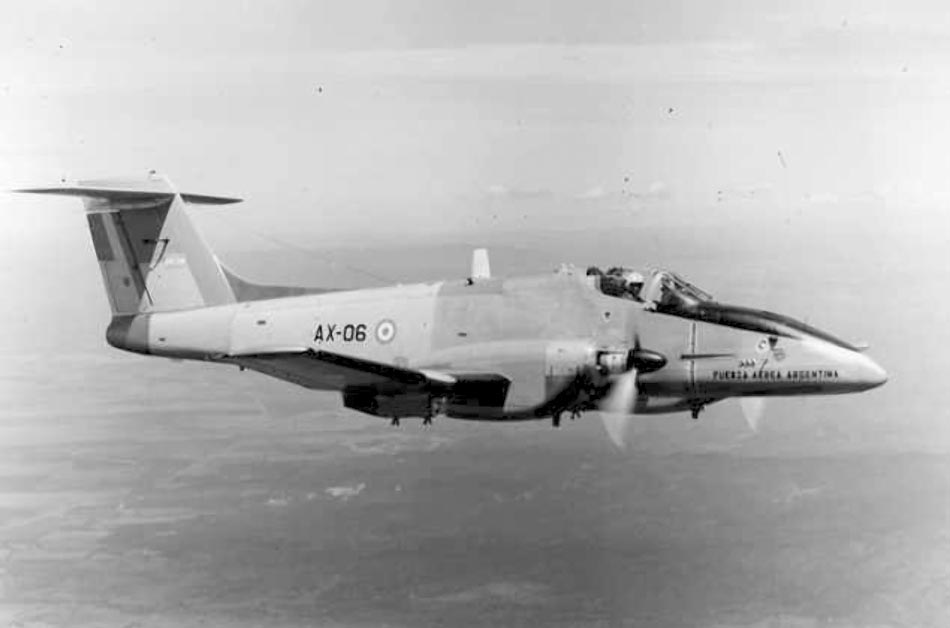From what i’ve heard the Pucara was a devestatingly effective ground attack aircraft, although a bit weak in air to air.
The Brits saw it as such a threat in the Falklands that the Pebble Island base of the Pucaras were bestowed the rare honour of having a whole SAS squadron (D Sqn i think) and assorted extras such as the NGO parties of 29 Cdo RA “visit” them one night to ensure they wouldn’t pose a threat to the British ground forces.
As far as i can recall there were no human casualties, as the SAS ran around the airfield blowing up aircraft with bombs just as they had done in the desert in WW2 at their formation.
A few interesting pictures, (not meant to wind you up Erwin).

This one was obviously destroyed by either bombs, rockets or gun fire.

This one is strange, it looks to me like some one has tipped it up on end!! Maybe the raiding party ran out of ammo!!!

This is the description for the above painting…
D squadron 22 SAS, made their way to the Argentinian landing strip where they proceeded to destroy 11 enemy aircraft with demolition charges, 66mm rockets and small arms. The destruction of these enemy aircraft, among them Paccaras, most certainly saved many lives among the Task Force and proved a valuable morale booster at the same time.

 ).
).






 )
)


